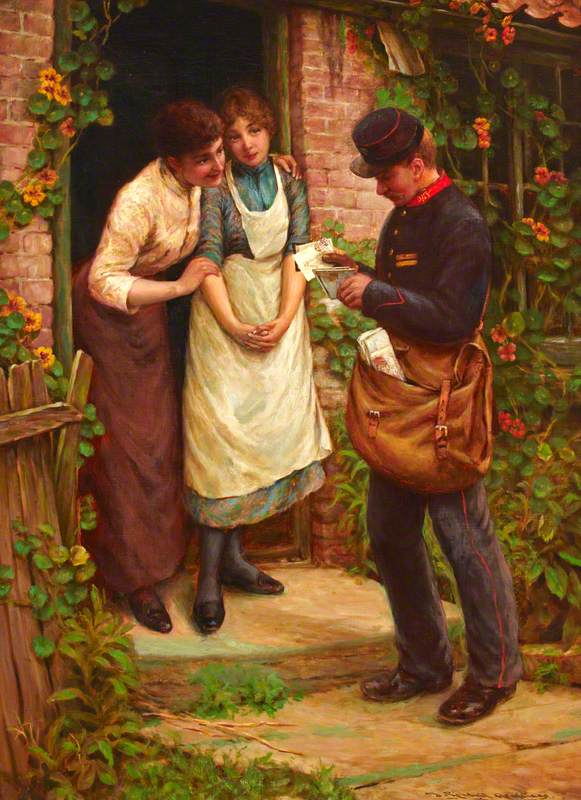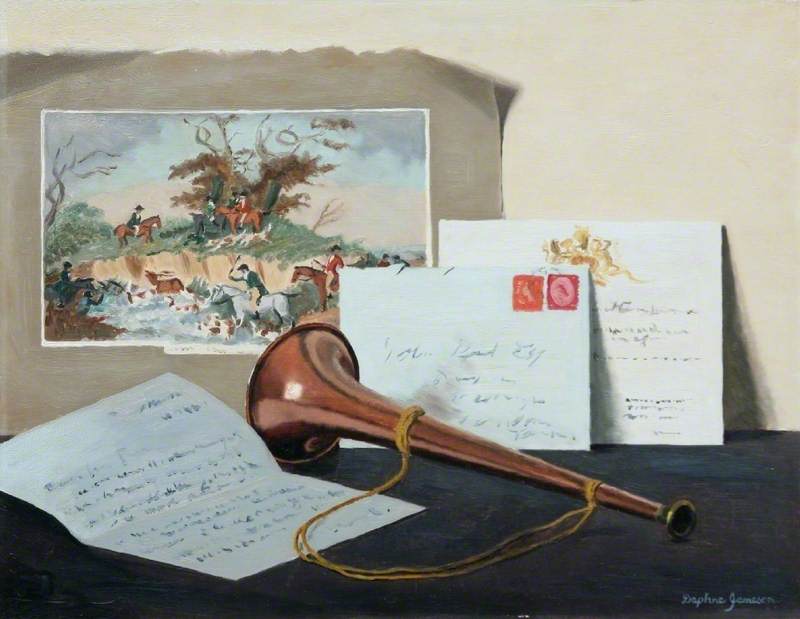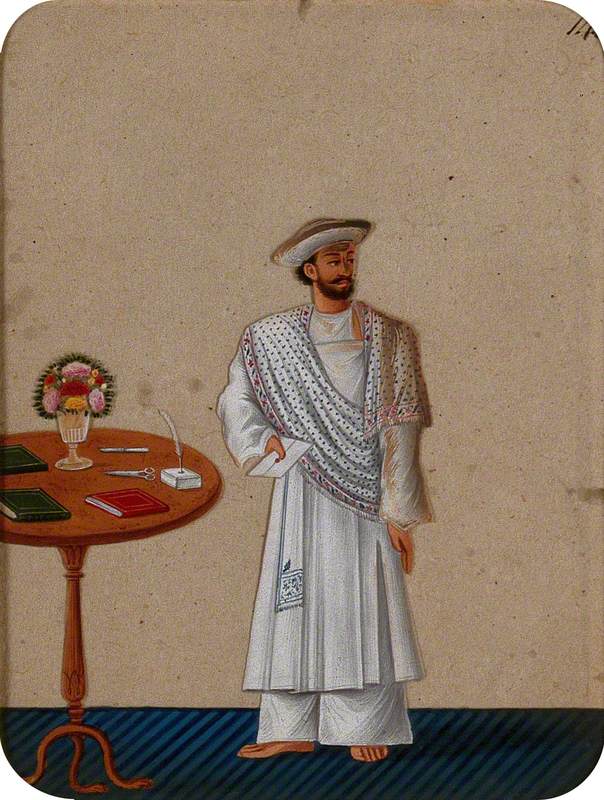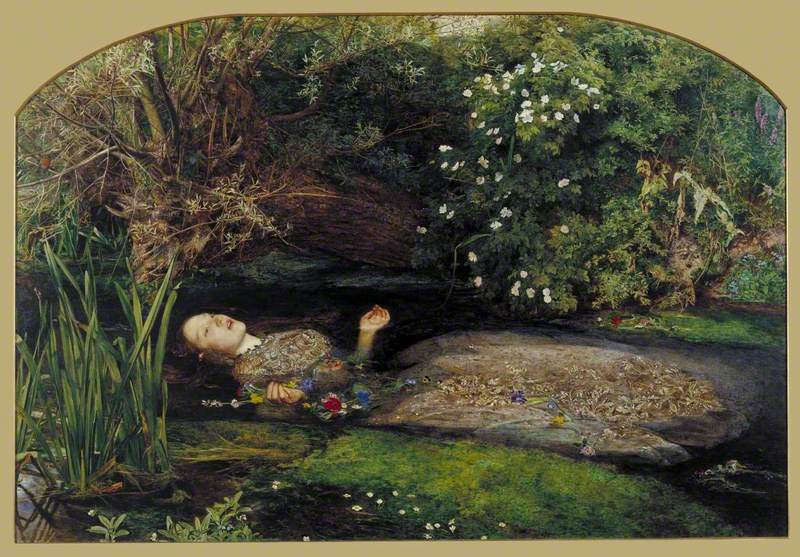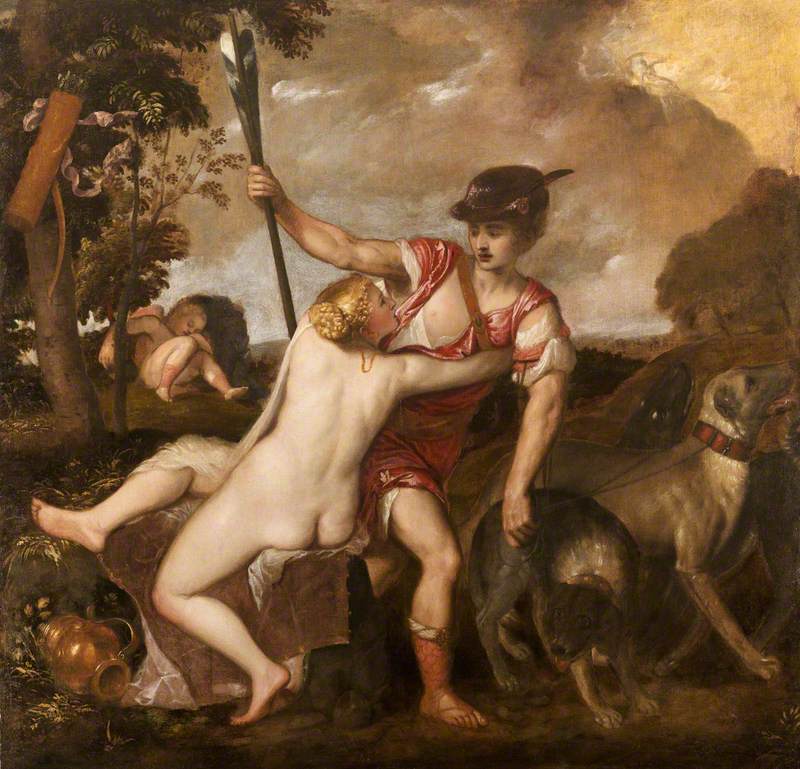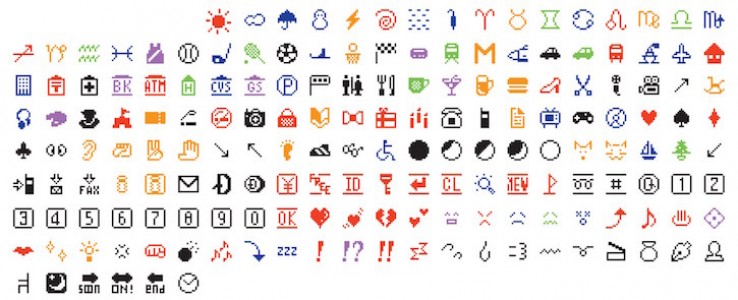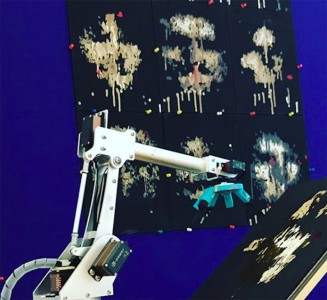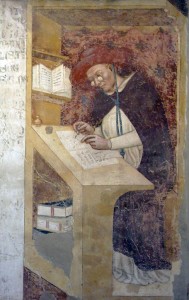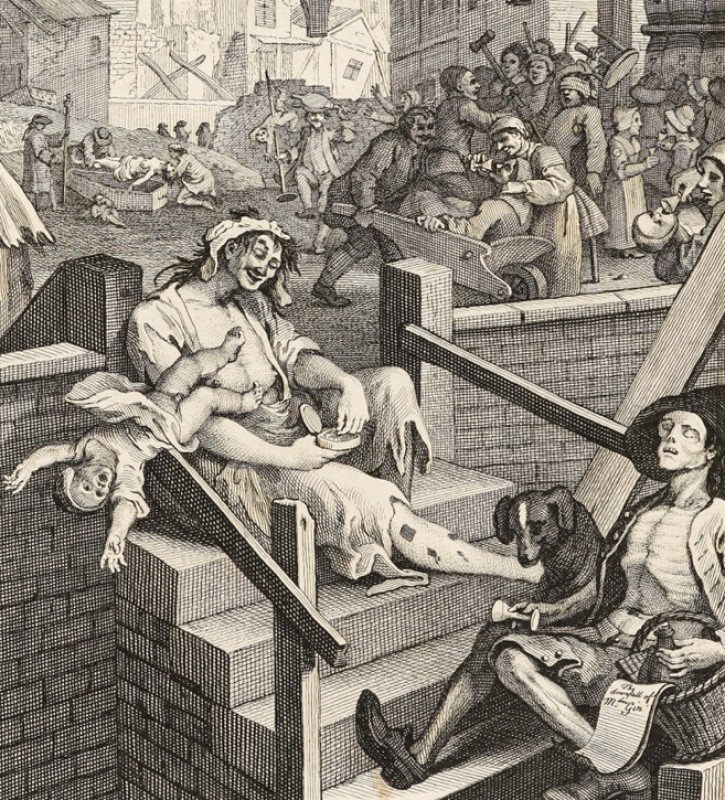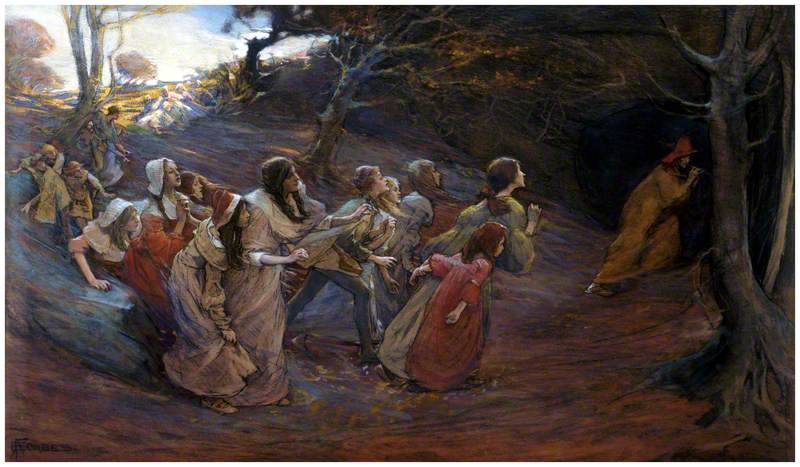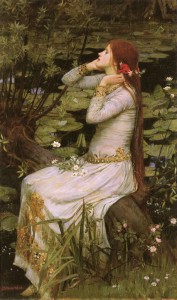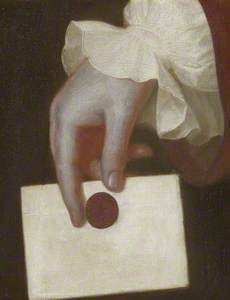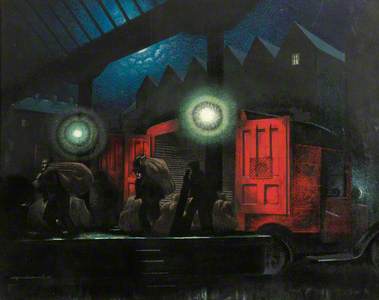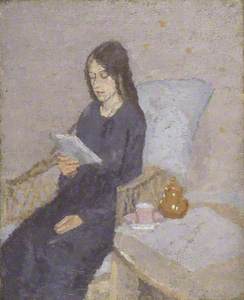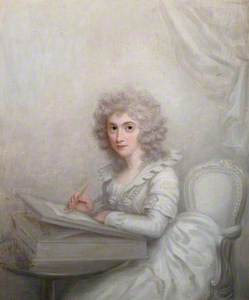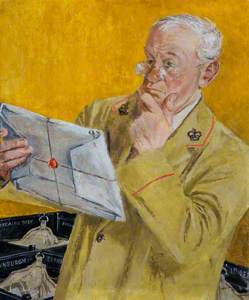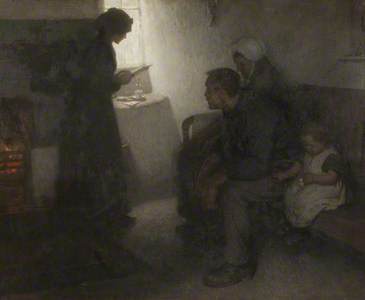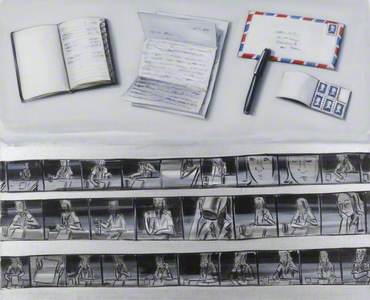Anyone visiting Art UK earlier this year would have come across a pop-up window encouraging them to 'Subscribe to our newsletter – new stories, newly added artworks and shop offers delivered straight to your inbox every week.' This appeal to visitors to become more closely involved with the website was accompanied by an image of Edwaert Collier's arresting, but decidedly analogue painting A Trompe l'oeil of Newspapers, Letters and Writing Implements on a Wooden Board, dating from around 1699.
A Trompe l'oeil of Newspapers, Letters and Writing Implements on a Wooden Board
c.1699
Edwaert Collier (c.1640–c.1707) 
The entry on the painting in the Tate Gallery's Illustrated Catalogue of Acquisitions 1984–1986 tells us that the illusionistic letter rack was one of Collier's favourite subjects. Many variations of it are known, with similar objects differently arranged, but always with different dates and printed texts.
In addition to the folded London newspaper and broadsheet in this painting, there is a letter sealed with three pieces of red wax, one of them impressed with a profile head, and a folded paper inscribed 'Memorye'. Other items include a quill pen, a penknife, a stick of sealing wax and a tortoiseshell comb, and everything is held in place by a series of horizontal leather straps against a raw pine board made up of two vertical planks.
Collier's enigmatic trompe l'oeil letter – stamped 'NO|29' but devoid of a name and address – started me thinking about personal or informal letters and their place in our lives today. It also led me to think about paintings depicting the writing, delivery and reading of letters: the whole art of correspondence.
Who sits down at a desk these days to write a letter? Certainly not me, and I'm guessing not you either. The space once reserved for the typewriter, desk pad and blotter has long since been appropriated by the personal computer; all of us are in thrall to its backlit screen and the instant gratifications of email, social media and the world wide web.
When the coalition government controversially privatised Royal Mail in 2013, letter volumes were falling by 4% to 6% year on year. The rate had accelerated to 8% even before the arrival of the coronavirus pandemic and this year's decline is forecast to be nearer 17%. Part of the reason for the decrease lies in the fact that companies have been forced to rein in their mail marketing campaigns because of tighter EU privacy rules. In the meanwhile, businesses continue to switch from letters to email in communicating with their customers. And all of us are writing fewer letters.
Of course, this is good news in one important respect – fewer letters means less tree-felling for papermaking purposes and more sequestered carbon – but the reduction in the circulation of personal or informal letters signals a very human loss. When was the last time you experienced the rush of anticipation brought on by the smack of the letterbox or the thump of letters on the doormat? When was the last time you stopped to take pleasure in the design of a postage stamp, the tactility of an envelope, or the cursive script of a friend or lover?
Viewed in the context of today's hyper-connected world, the writing of personal letters has come to symbolise slower communication in slower times – eras in which the written word circulated at a gentler pace.
The Greek historian Hellanicus of Lesbos credits the Achaemenid Empress Atossa with writing the first recorded letter around 500 BC. While the primacy of that letter is impossible to prove, there is little doubt that the first credible claims for the development of real postal systems, in which an intermediary carries written documents from one person to another, come from Ancient Persia and India.
Historically, the cost of delivering a letter was paid for directly either by the sender or more usually by the recipient. All this changed in 1840 when the United Kingdom introduced the first prepaid nationwide delivery service featuring the iconic Penny Black and Two Penny Blue stamps. The efficiency of the prepaid system and generated revenue meant that sooner or later other countries would follow suit and national postal systems were set up everywhere, normally as government monopolies.
So what of the art of correspondence? Painterly representations of letters and the writing, delivery and reading of letters can signify any number of things from intimacy, identity and ownership to intelligence, learning and authority. They can also herald the disclosure of good and bad news. Some works from the recent past depict typed or printed letters, but most paintings show us letters handwritten in graphite or ink.
The writer and academic Mary Gordon celebrated the intrinsic importance of handwriting in an essay first published in the New York Times called 'Putting Pen to Paper, but Not Just Any Pen or Just Any Paper.'
'Writing by hand is laborious,' she said, 'and that is why typewriters were invented. But I believe that the labour has virtue, because of its very physicality. For one thing it involves flesh, blood and the thingness of pen and paper, those anchors that remind us that, however thoroughly we lose ourselves in the vortex of our invention, we inhabit a corporeal world.'
On another occasion in the same newspaper, the Paris-based journalist Catherine Field described the creativity at the heart of a handwritten letter. In 'The Fading Art of Letter Writing' she wrote that handwritten letters are 'a deliberate act of exposure, a form of vulnerability, because handwriting opens a window on the soul in a way that cyber communication can never do. You savour their arrival and later take care to place them in a box for safekeeping.'
Of all the letters we receive and keep safely, none are more cherished than love letters. Paintings depicting the writing and reading of love letters go back centuries, but the subject reached a high point in the 'Dutch Golden Age', especially in the work of Johannes Vermeer, Pieter de Hooch and Gerard ter Borch.
With An Officer Dictating a Letter and A Lady Reading a Letter, Gerard ter Borch the younger presents us with both sides of an amorous epistolary exchange. Unpicking the meaning of A Lady Reading a Letter is a fairly simple exercise: a woman is distracted from her household tasks – see the items in the wicker basket at her feet – by a note from her beloved which she holds in both hands, poring over the words. Unpicking the meaning of An Officer Dictating a Letter is rather less straightforward.
An Officer dictating a Letter
about 1655-8
Gerard ter Borch the younger (1617–1681) 
In the earlier of the two paintings, a young officer dictates a letter to a subordinate while a blue-jerkined messenger stands off to the right. The National Gallery website suggests that the messenger's faintly amused expression and the way he catches our eye creates a conspiratorial air.
The artist originally included in the picture a clue to its meaning, but ultimately he decided to paint it out. Over time the pigment in this area of the canvas has become transparent and revealed that hidden clue, a playing card on the floor beside the bored-looking spaniel: the ace of hearts. This would have almost certainly been interpreted as a reference to romance – a reference reinforced by the presence of the canopy-tented bed in the background of the painting – and a clear suggestion that the letter being drafted is not a military communiqué, but a billet doux.
By removing the playing card, Ter Borch rendered the meaning of the picture more subtle, more mysterious. His intended treatment of the scene is all of a piece with its subject and provides us with an opportunity to engage intimately in the mechanics of the story – to dwell on the letter and imagine its impact.
Paul Bonaventura, independent producer and curator










